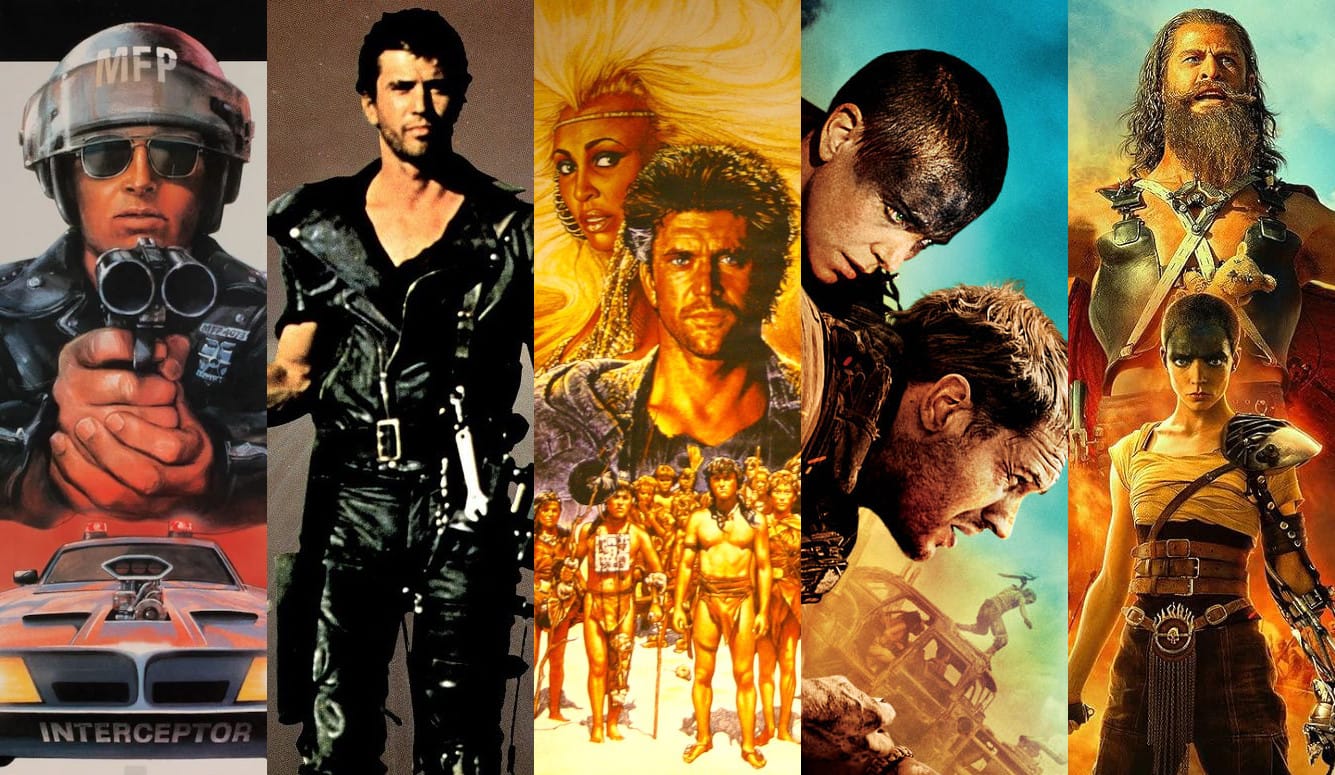Art and Culture
Blood, Sweat, and Gasoline
The story of Hollywood’s most unlikely blockbuster franchise, Mad Max.

I.
The Mad Max franchise is one of the more improbable successes in Hollywood history. It began in 1979 as an original, one-off, low-budget exploitation flick written, directed, and produced by first timers. The cast were no-name locals from a country on the other side of the world, and it featured an anti-hero who arrives at a bleak conclusion devoid of salvation or redemption. Nonetheless, Mad Max would become a 45-year-old cinematic juggernaut, spawning a franchise that has only grown in reputation under the control of its visionary creator, George Miller. With each subsequent instalment, Miller’s series has reinvented itself and deepened its dystopian portrait of an alienated world riven by societal breakdown, environmental disaster, and the aftershocks of Armageddon. It achieved this success despite lawsuits, cast changes, and production shutdowns that led to decades-long gaps between films.
The Mad Max origin story is pure Grand Guignol. A nuclear war fought for control over energy resources has left much of the world a wasteland. Max Rockatansky, a decent family man and a Main Force Patrol officer, chases a notorious escaped gang member nicknamed the Nightrider to death in a fiery crash. Max acknowledges that he is starting to enjoy the violence of the road and worries that he is not so different from the criminals he pursues, so he quits the police force to save his humanity. But gang leaders Bubba and Toecutter (slang for a criminal who preys on criminals) want revenge for Nightrider’s death and kill Max’s partner, dog, wife, and infant son. Max exacts brutal vengeance but the experience leaves him a spiritually broken nomad.
Revenge thrillers usually begin with the killing of a partner and/or child, before we’ve had a chance to become emotionally invested in the characters. But in Mad Max, the murders of the family occur after 75 minutes of gathering menace—a tragedy from which there is no psychological return. It’s a gutsy violation of convention, and even without the hint of a sequel to put things right, it became a hit.
Miller had his Mad Max “aha moment” during the oil crisis of the early 1970s, which illustrates how the Mad Max franchise has managed to remain within the zeitgeist, despite the flip in our environmental concerns. Back then, pollution and pesticides were thought to be the most pressing environmental concerns. (“Just two things of which you must beware,” satirical songwriter Tom Lehrer advised visitors to New York City in 1967. “Don’t drink the water and don’t breathe the air”). Few people were especially worried about climate change. On the contrary, they were more terrified that oil and gas would run out.
Peak oil theory, popularised by Malthusian geologist M. King Hubbert, held that oil production would max out sometime in the late 1960s, and that an irreversible decline would follow, leading to societal collapse. When extraction dropped after 1970, Hubbert was declared an environmental prophet and conservation became an international priority. Public fear turned to panic during the Arab embargo of 1973–74, when OPEC nations cut oil production and blocked sales to the US to punish its military support for Israel during the Yom Kippur War.
A White House aide called the embargo “an energy Pearl Harbour.” Within months, the price of oil quadrupled, inflation and unemployment rose worldwide, the US government imposed rationing, and President Nixon debated whether or not to use military force to seize oil fields in Saudi Arabia, Kuwait, and Abu Dhabi. In Melbourne, Australia, Miller now recalls, only one of the city’s gas stations remained open. After ten days, gunfire broke out. “What would happen in a hundred days?” he wondered. “What would happen in a thousand days?” His answer was Mad Max.





